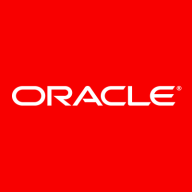

Find out in this report how the two Data Warehouse solutions compare in terms of features, pricing, service and support, easy of deployment, and ROI.


Amazon Redshift is a fully administered, petabyte-scale cloud-based data warehouse service. Users are able to begin with a minimal amount of gigabytes of data and can easily scale up to a petabyte or more as needed. This will enable them to utilize their own data to develop new intuitions on how to improve business processes and client relations.
Initially, users start to develop a data warehouse by initiating what is called an Amazon Redshift cluster or a set of nodes. Once the cluster has been provisioned, users can seamlessly upload data sets, and then begin to perform data analysis queries. Amazon Redshift delivers super-fast query performance, regardless of size, utilizing the exact SQL-based tools and BI applications that most users are already working with today.
The Amazon Redshift service performs all of the work of setting up, operating, and scaling a data warehouse. These tasks include provisioning capacity, monitoring and backing up the cluster, and applying patches and upgrades to the Amazon Redshift engine.
Amazon Redshift Functionalities
Amazon Redshift has many valuable key functionalities. Some of its most useful functionalities include:
Reviews from Real Users
“Redshift's versioning and data security are the two most critical features. When migrating into the cloud, it's vital to secure the data. The encryption and security are there.” - Kundan A., Senior Consultant at Dynamic Elements AS
“With the cloud version whenever you want to deploy, you can scale up, and down, and it has a data warehousing capability. Redshift has many features. They have enriched and elaborate documentation that is helpful.”- Aishwarya K., Solution Architect at Capgemini
Oracle Big Data Appliance is a flexible, high-performance, secure platform for running diverse workloads on Hadoop and NoSQL systems. With Oracle Big Data SQL, Oracle Big Data Appliance extends Oracle’s industry-leading implementation of SQL to Hadoop and NoSQL systems. By combining the newest technologies from the Hadoop ecosystem and powerful Oracle SQL capabilities together on a single pre-configured platform, Oracle Big Data Appliance is uniquely able to support rapid development of new Big Data applications and tight integration with existing relational data.
For more information on Oracle Big Data Appliance, visit Oracle.com
We monitor all Data Warehouse reviews to prevent fraudulent reviews and keep review quality high. We do not post reviews by company employees or direct competitors. We validate each review for authenticity via cross-reference with LinkedIn, and personal follow-up with the reviewer when necessary.